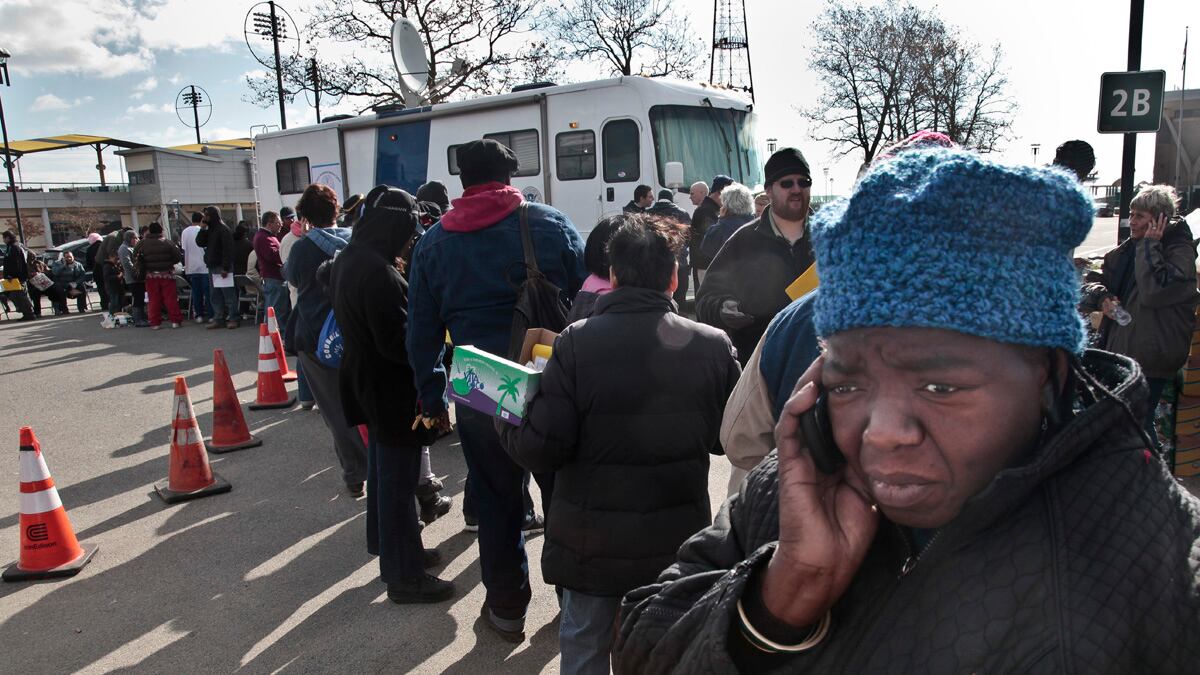It’s one of those stories that sends you straight to Snopes, that debunker of Internet myths and conspiracy theories. Could it possibly be true that FEMA, the most maligned federal agency after the IRS, asked victims of Hurricane Katrina, Rita, and Wilma to repay millions of dollars in relief funds supposedly transmitted in error? And did they really ask for compensation from Katrina victims more than five years after their checks were cashed?

One can be forgiven a certain degree of skepticism: After the tragedy in New Orleans, a series of stubborn myths percolated online—mass sexual assaults in the Superdome, psychotic New Orleanians attempting to shoot down rescue helicopters.
But it is indeed true that in 2010 FEMA audited hundreds of millions of dollars it distributed in relief money, sending out 83,000 notices to those who received—and almost surely spent—agency cash. According to the Washington Post, the government was looking to recoup $385 million of Katrina, Rita, and Wilma aid money.
ADVERTISEMENT
The feckless disaster relief agency had become a feckless debt collection agency.
As money trickles to Hurricane Sandy victims, it’s reasonable to wonder if the feds will someday come skulking back, asking victims to cough up money mistakenly disbursed. According to a 2011 report from the Associated Press, FEMA claims that “procedural changes since 2005 mean future disaster victims aren’t likely to have to deal with large recalls of cash.” Not entirely reassuring.
After two years of frightening storm victims who received federal relief, the agency—after being prodded by Senators Mary L. Landrieu (D-LA), Mark Pryor (D-AR), and Thad Cochran (R-MS), amongst others—announced that it would “forgive” overpayments made to hurricane survivors. But in typical FEMA style, those asked to return cash are required to file a “repayment waiver” within 60 days of receiving a mea culpa letter from the agency. But many of those initial letters seeking repayment were returned to Washington unopened, with thousands of victims having long since abandoned houses and communities devastated by Mother Nature. And also unknown is just how much FEMA has spent attempting to recover its money; the percentage of people willing and able to repay the government is doubtless vanishingly small.
After its disastrous performance with Hurricane Katrina, and smaller failures since, the agency became a punch line, a perfect example of the Bush administration’s incompetence in the face of a major domestic crisis—underscored by the president’s now-infamous support of agency director Michael Brown: “Heck of a job Brownie.” All of this is undeniably true, and Katrina is remembered as one of that administration’s signature failures. But all the political point-scoring obscures deep institutional problems at the agency that exist independent of who occupies the White House.
Indeed, the consistent legal hurdles and bureaucratic inertia associated with FEMA has even justified the existence of a law firm that deals exclusively with the agency: FEMA Law Associates in Washington, DC. “When disaster strikes,” the firm’s website says, “organizations and institutions across America discover they need more than basic knowledge of the rules that govern grant and insurance programs administered by the Federal Emergency Management Agency.”
President Obama has received generally high marks for his response, as has New Jersey Governor Chris Christie, but in areas hardest hit by Sandy, the thicket of rules and regulations governing relief efforts are, once again, turning the afflicted against the agency. On election day, Long Island drive-time radio hosts “Chaz and AJ” laid into FEMA spokesman Rita Egan for the agency’s lumbering response in Connecticut and New York, starting their interview with a rather blunt question: Isn’t FEMA embarrassed by its response to the crisis?
And it’s not hard to find other disillusioned Sandy victims. The Newark Star-Ledger wasn’t worried about Sandy’s victims being mistakenly overpaid, but wondered if they would get any financial relief: “Homeowners looking to the Federal Emergency Management Agency for assistance to rebuild their homes are learning they won’t get the immediate aid they expected. And maybe no aid at all.” As another storm bore down on New York, local media in New York jumped on reports that some FEMA relief offices had closed “due to weather,” leaving local residents who rely on the agency’s food distribution centers out of luck. Others slammed FEMA’s clumsy response to ongoing fuel shortages.
Before last Tuesday’s presidential election, FEMA existed in the media almost exclusively as a surrogate for opposing sides of an ideological divide—big government versus small—and as a test of the president’s ability to respond to crisis with speed and vigor. But it’s too early to pass overall judgment on FEMA’s response to the storm, anecdotal evidence of its negligence notwithstanding. The election is over, the ideological struggle will move on to other examples of government success or failure, and those effected by the Sandy calamity will continue to navigate the red tape of the Federal Emergency Management agency, attempting to receive rebuilding money—and hoping that Washington never asks for it back.





